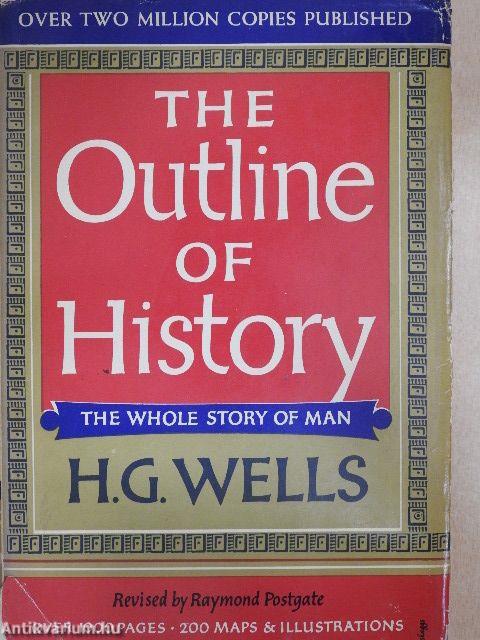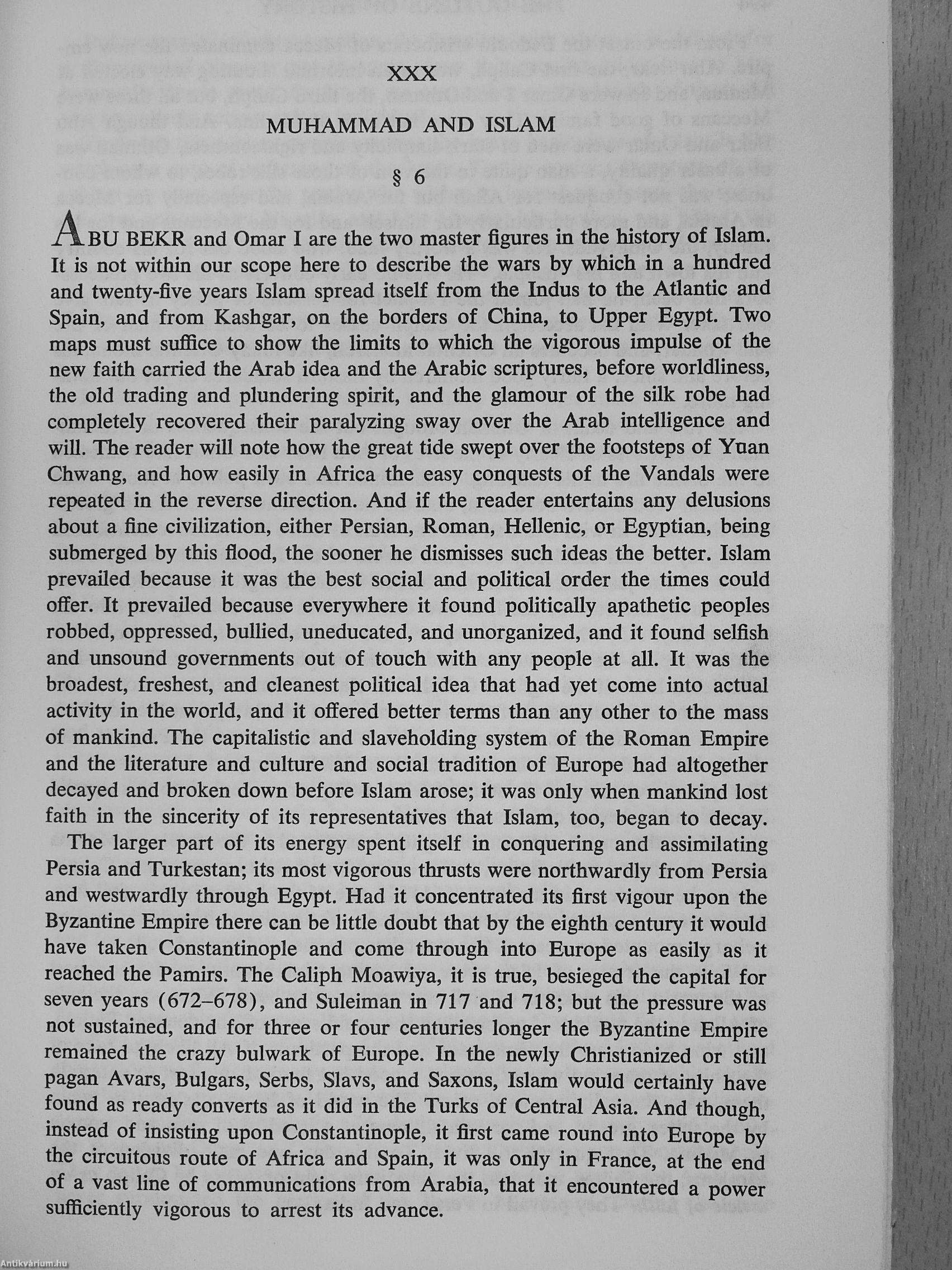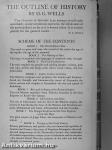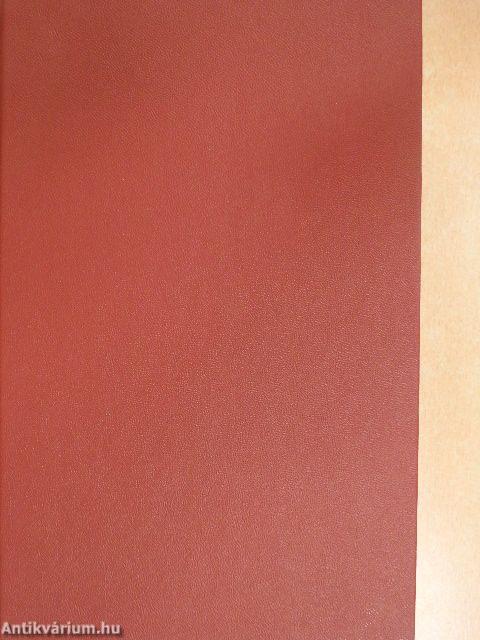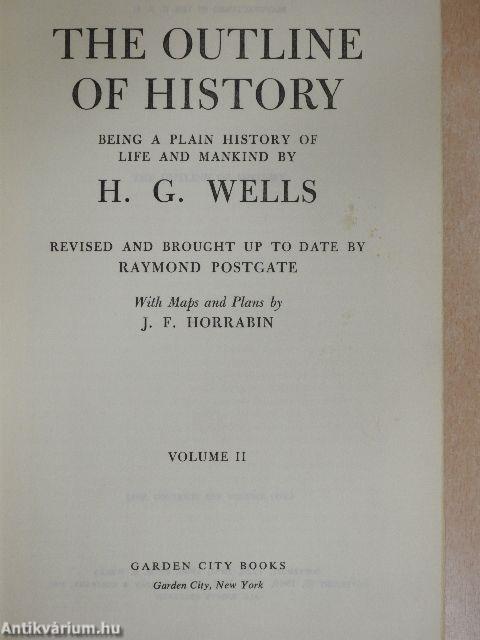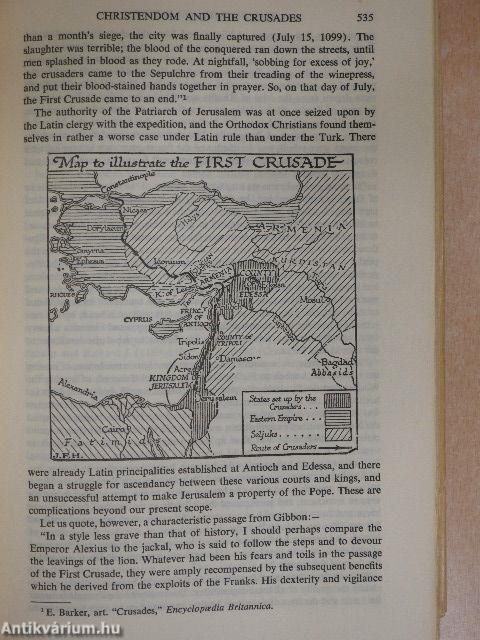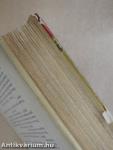1.067.339
kiadvánnyal nyújtjuk Magyarország legnagyobb antikvár könyv-kínálatát

VISSZA
A TETEJÉRE
JAVASLATOKÉszre-
vételek
The Outline of History II. (töredék)
The whole story of man
| Kiadó: | Garden City Books |
|---|---|
| Kiadás helye: | New York |
| Kiadás éve: | |
| Kötés típusa: | Fűzött keménykötés |
| Oldalszám: | 535 oldal |
| Sorozatcím: | |
| Kötetszám: | |
| Nyelv: | Angol |
| Méret: | 22 cm x 15 cm |
| ISBN: | |
| Megjegyzés: | Fekete-fehér térképekkel, illusztrációkkal. Töredék kötet. |
naponta értesítjük a beérkező friss
kiadványokról
naponta értesítjük a beérkező friss
kiadványokról
Előszó
TovábbFülszöveg
THE OUTLINE OF HISTORY
BY H. G. WELLS
"The Outline of History is an attempt to tell truly and clearly, in one continuous narrative, the whole story of life and mankind, so far as it is known today. It is written plainly for the sreneral reader—"
i' ' ö h. g. wells
SCHEME OF THE CONTENTS
BOOK 1 The World Before Man The earth in space and time—the record of the rocks—the age of the reptile—the age of the mammal.
BOOK 2 The Making of Man The races of mankind—the languages of mankind—early thought.
BOOK 3 The First Civilizations The early empires—sea peoples and trading peoples—writing—gods and stars, priests and kings—serfs, slaves, social classes, and free individuals.
BOOK 4 Judea, Greece, and India The Hebrew scriptures and prophets—the Greeks and Persians-Greek art, thought, and literature—the career of Alexander the Great—science and religion at Alexandria—the rise and spread of Buddhism.
BOOK 5 Rise and Collapse of the Roman Empire The two Western republics—from... Tovább
Fülszöveg
THE OUTLINE OF HISTORY
BY H. G. WELLS
"The Outline of History is an attempt to tell truly and clearly, in one continuous narrative, the whole story of life and mankind, so far as it is known today. It is written plainly for the sreneral reader—"
i' ' ö h. g. wells
SCHEME OF THE CONTENTS
BOOK 1 The World Before Man The earth in space and time—the record of the rocks—the age of the reptile—the age of the mammal.
BOOK 2 The Making of Man The races of mankind—the languages of mankind—early thought.
BOOK 3 The First Civilizations The early empires—sea peoples and trading peoples—writing—gods and stars, priests and kings—serfs, slaves, social classes, and free individuals.
BOOK 4 Judea, Greece, and India The Hebrew scriptures and prophets—the Greeks and Persians-Greek art, thought, and literature—the career of Alexander the Great—science and religion at Alexandria—the rise and spread of Buddhism.
BOOK 5 Rise and Collapse of the Roman Empire The two Western republics—from Tiberius Gracchus to the God Emperor in Rome—the Caesars.
BOOK 6 Christianity and Islam The rise of Christianity and the fall of the Western empire—the history of Asia during the decay of the Western and Byzantine empires—Muhammad and Islam—Christendom and the Crusades.
BOOK 7 The Mongol Empires and the New Empires of the Sea Ways
The great empire of Jengis Khan—the renascence of Western civilization.
BOOK 8 The Age of the Great Powers Princes, parliaments, and powers—the new democratic republics of America and France—the career of Napoleon Bonaparte—the realities and imaginations of the Nineteenth Century—the catastrophe of modern imperialism—twenty years of indecision and its outcome —the Second World War—the tensions of the cold war and the struggle to maintain peace.
printed in the u.s.a.
THE OUTLINE OF HISTORY H. G.Wells
Thoroughly revised.
Brought up to date by Raymond Postgate
The Outline of History, now completely revised and updated, has established itself as one of the truly great books of all time. It is a brilliant survey of man's progress, from the earliest struggles of the caveman to the momentous events of the present. From all the diverse cultural, economic, political, and social backgrounds of mankind H. G. Wells has evolved a thrilling narrative that tells, in a lucid and concise style, the dramatic struggle of man against nature and his environment. The Outline of History is a library of knowledge of the past—an authentic record of world history interpreted by one of the keenest minds of this century.
Here is the whole story of man, commencing with a compact survey of the dim and primeval millions of years before the coming of man, and continuing through the earliest beginnings of society and of language, when man began to have some understanding of the need for co-operation.
Then follows the first periods of which we have reasonable records—when the Assyrians, the Greeks, the Persians, the Judeans, and the Egyptians were the great powers. Literature and philosophy and art became important. Science and invention as we know them today appeared. Men became rulers and nations grew in strength.
(continued on back flap)
(continued from front flap)
The far-reaching Roman Empire, under the dictatorships of tlie Caesars, rose to magnificent lieights and then disintegrated. We see the growth of Christianity and Islam and the clashes between them known as the Crusades. There are low ebbs of human progress in the Dark Ages. Distinct nationalities emerge—French and German and English. Then, with the ending of the Middle Ages, we see the magnificence of the Renaissance, the new awakening in thought and science, in art and literature, in religion and politics.
With modern times we come to the growth of the republics and to the splendors of the Grand Monarchies. The new democracies of France and the Americas come into being. Napoleon Bonaparte blazes through his extraordinary career. Life is revolutionized by mechanical inventions. Science shows the way to a new ease. But with this progress problems come too fast for man to solve. The economy of the world is upset; periods of depression, of unemployment, of catastrophe and greed and war are more and more frequent.
The Outline of History is outstanding in conception, scope, and treatment. Familiarity with what it tells is essential for a cultured understanding of the modern world and the forces that mold it.
Before H. G. Wells died in 1946, he made several of the included revisions himself. Since that time, his son. Professor G. P. Wells, and Raymond Postgate, the distinguished scholar and writer, have undertaken a further revision in the light of new discoveries in anthropology and recent events in world history. Professor Wells, without altering his father's style, has added new insights on prehistoric man that have just become available. Mr. Post-gate has added a notable section on the Second World War and the struggle to maintain peace today. Vissza



